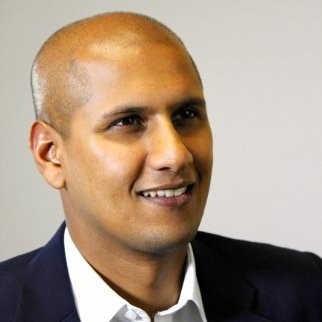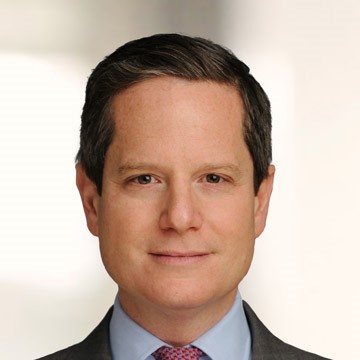What is the difference between active and passive investing?
The FT has published a whole series on ETFs, which serves as a good introduction to modern passive investing. Our pick of the series is John Auther’s note on the danger that ETFs can potentially give the appearance of high liquidity and encourage excessive trading. Our view to trading ETFs is much the same as our view on active strategies - take a long-term approach.
Irish broker Davy offers a neat primer on active and passive investing while EY highlights current and expected ETF industry developments (mentioning our very own head of ETFs, Nick King) and is especially interesting on the increasing blurring between active funds and factor, thematic and active ETFs.
Michael Mauboussin of Credit Suisse, who is always worth reading, writes* about how passive investing and active management interact. He contends that investors shifting from active to passive are less informed than those who stay, making the game harder for remaining active investors - rather like the weak players leaving the poker table. We retort that there’s an opposing effect as well: as more investors give up exploiting inefficiencies, there’s more left for the active players who remain - rather like the prize pots rising at the poker table.
Which is better, active or passive?
As you probably have guessed, there’s no definitive answer to this question. But there are lots of weighty opinions on either side.
Warren Buffett, a man who’s made his fortune through active investing, in his 2016 letter to investors, discussed his ten year bet that the stock market would outperform the hedge fund industry. Buffett won of course, but it’s all a matter of simple statistics. In aggregate, the active industry must underperform the index given that investing is a zero-sum game and subject to fees. By the same token, passive funds must also underperform because of fees. But that doesn’t mean an individual active investor can’t consistently outperform - just look at Buffett’s record - whereas an index fund, by definition, can never beat the benchmark.
Blackrock, a mighty force in index investing, spiritedly argues its case. They say that index investing is relatively small and uninfluential at less than 20 per cent of global equities, and that investment flows are driven by overall asset allocation decisions, not the appeal of certain products or investments styles. We agree to a point. The share of the market of index investing depends on which market you look at. For example, the ETF and passive share of assets under management in US equities is around 40 per cent.1 On the second point, most investors do indeed base decisions on overall asset allocation views, but there can be pockets of herd behaviour - for example, the crowded short VIX trade which blew up two ETFs that track the volatility index in February 2018.
Alliance Bernstein analysts have been a bulwark for the active industry. Their paper, The Silent Road to Serfdom*, created a minor storm when it suggested that passive investing is worse than Marxism because it takes away the capital allocation function of markets. That’s a tad excessive in our view - it’s feasible to have both approaches operating side by side in a healthy market, as we currently do. A market comprising only passive funds would have negative implications for the economy, just as a market comprising only short-term traders would, but there’s no foreseeable danger of either happening. It’s the balance that’s important.
Charles Ellis wrote ‘The Loser’s Game’* in 1995 but it still sounds fresh today. He likens investing to a game of tennis. In professional tennis, matches are ‘won’ by superior shots. But in amateur tennis matches are ‘lost’ by mistakes - whoever makes fewer mistakes wins. Ellis argues that investing was like professional tennis in the 60s when skilled investors could outperform, but because of the influx of ‘smart’ money (a greater proportion of money managed by professional investors), it gradually turned into an amateur game where investors have to avoid the falling knives to outperform. With the rise of passive investing, we wonder whether investing could be slowly swinging back to a winner’s game?
How can stakeholders respond to the active and passive debate?
Investment consultancy Novus suggests that active portfolio managers can adopt seven habits to help them succeed in the changing investment landscape - if only it were so easy. NIRI (National Investor Relations Institute) provides some very good advice for companies seeking to attract attention from buy-side investors. NIRI recommends better communication and access to senior executives - we wholeheartedly agree.
Goldman Sachs has produced an interesting paper* on how company directors can respond to a growing passive shareholder base. It argues that the recent decline in active single-stock investing loosens the link between a company’s fundamental performance and its stock price. This means that boards need to properly align management incentive schemes to ensure corporate performance.
Academic work on the subject
The roots of passive investment start with Harry Markowitz’s Portfolio Selection, which was the door through which indexing and passive investing could develop. Markowitz introduced the idea of maximising return for a given level of risk through diversification. In 1964, Bill Sharpe defined alpha and beta as we know them today when he created the capital asset pricing model. Eugene Fama published Efficient Capital Markets in 1970, declaring that it’s impossible to beat the market because it is fully efficient, thereby completing the foundations of the passive argument.
It’s this conclusion that markets are efficient that is the point of contention between academic active and passive advocates. Lynn Stout attacks the efficient capital markets hypothesis from its building blocks, criticising its premises (efficient markets are anything but), while Robert Shiller surveys psychological biases which indicate that markets are not rational, and Richard Thaler demonstrates the effect of frictions and biases on markets. Finally, Warren Buffett points* to a number of investors who have consistently outperformed the market using a similar strategy, and who were pre-identified as superior investors.
Eugene Fama and Richard Thaler, both Nobel Prize winners who sit across the corridor from each other at the University of Chicago School of Business, hold a candid and entertaining video debate on whether markets are efficient here*.
Our view is that markets are largely efficient (in most public markets, most of the time), so passive and smart-beta approaches deliver market returns in a cost effective way. However there are instances of market inefficiency such as over the longer term, in less liquid markets, around corporate events and technical drivers, and based on behavioural biases. It is these instances that can be consistently exploited by active managers. What’s important for investors is that their passive funds replicate the index faithfully and cheaply, and their active managers generate commensurate value over the long term using truly active strategies. This is a good article explaining how the active share ratio can help investors measure the magnitude of active exposure.
Books on the subject
Security Analysis* - first published in the 1930s - is the ultimate book for active management enthusiasts. It lays out a framework for fundamental security-specific strategies to outperform in equity and bond markets. Misbehaving is a sort of career biography by Richard Thaler, setting out how he applied lessons from the world of psychology to the world of investing, thereby kicking off the discipline of behavioural finance.
A Random Walk Down Wall St is an accessible defence of the efficient markets theory, updated for smart-beta funds and derivatives. John Bogle, founder of the Vanguard Group, in Common Sense on Mutual Funds, describes how to think about investing in mutual funds from a passive perspective.
Something lighter - film and fiction
American Beauty* is a biting satire on middle class America. We (tenuously) relate it back to the active and passive debate through its central character, who has largely been leading a passive life until the moment he switches to making more proactive lifestyle choices. Both approaches have their pitfalls.
Aesop’s Fables is a collection of ancient stories with the Hare and the Tortoise perhaps the most famous. Of course, the tortoise wins in the end, but it’s the moral of the story which is interesting - in some versions it’s the perseverance of the tortoise, in others it’s the foolish over-confidence of the hare. Perseverance and avoiding over-confidence are important characteristics for investors whatever strategy they follow.
Highly recommended list
- How passive investing shapes active management - Michael Mauboussin, Credit Suisse
- The Silent Road to Serfdom - Alliance Bernstein
- The Loser’s Game - Charles Ellis
- Directors’ dilemma: responding to the rise of passive investing - Goldman Sachs
- The Superinvestors of Graham-and-Doddsville - Warren Buffett
- Are markets efficient? - Chicago Booth School of Business
- Security Analysis - Benjamin Graham and David Dodd
- American Beauty - Directed by Sam Mendes






































